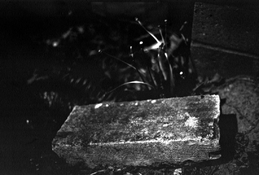htmlguru4242
Member
Hey folks - I've taken a loooong hiatus, and finally decided to return!
Anyways, I picked up a couple rolls of FPP (Svema) Super Positive film. I used it a few years ago, and things came out great, this time, not so much.
I've attached a picture that I snapped with my phone, with the film against my MacBook screen, so sorry about the moire artifacts. They look denser here than in reality.
I used D-76 in the past, but all I have with me on the moment (I'm on vacation) is Ilfosol-3. Roll 1, developed in 1+9, 7 minutes @ 21c. The results were super thin. I
Roll 2, I shot a couple of blank frames with the lens cap on to see what the density of "black" would be. Souped 10 minutes, same thing, though [just] noticeably darker. The images are there (and damn, are the gorgeous), but they're not easily viewable unless I place the film on a solid white surface.
I don't have a densitiometer, but I set up my lux meter under a tungsten lamp. Placing the dark frame of the film over the sensor cut the reading by a factor of 4, which works out to an OD of 0.6 [the base-10 log of 4).
The highlights are absolutely crystal-clear.
I shot both of them outside, in bright sun, at ISO 0.8 (metered at ISO 6 and exposed +3 stops). Even though the film is ortho, I loaded it into the tank in the dark, no safelight. I have no idea what happened or why they came out like this.
Anyone have any experience with this film? Did I massively under-develop? Did I somehow manage to fog it? I'm tempted to try another roll in D-76, but it's expensive, and not exactly a practical film stock, as novel and fun as it may be.
If anyone has any input, I'd tremendously appreciate it!

Anyways, I picked up a couple rolls of FPP (Svema) Super Positive film. I used it a few years ago, and things came out great, this time, not so much.
I've attached a picture that I snapped with my phone, with the film against my MacBook screen, so sorry about the moire artifacts. They look denser here than in reality.
I used D-76 in the past, but all I have with me on the moment (I'm on vacation) is Ilfosol-3. Roll 1, developed in 1+9, 7 minutes @ 21c. The results were super thin. I
Roll 2, I shot a couple of blank frames with the lens cap on to see what the density of "black" would be. Souped 10 minutes, same thing, though [just] noticeably darker. The images are there (and damn, are the gorgeous), but they're not easily viewable unless I place the film on a solid white surface.
I don't have a densitiometer, but I set up my lux meter under a tungsten lamp. Placing the dark frame of the film over the sensor cut the reading by a factor of 4, which works out to an OD of 0.6 [the base-10 log of 4).
The highlights are absolutely crystal-clear.
I shot both of them outside, in bright sun, at ISO 0.8 (metered at ISO 6 and exposed +3 stops). Even though the film is ortho, I loaded it into the tank in the dark, no safelight. I have no idea what happened or why they came out like this.
Anyone have any experience with this film? Did I massively under-develop? Did I somehow manage to fog it? I'm tempted to try another roll in D-76, but it's expensive, and not exactly a practical film stock, as novel and fun as it may be.
If anyone has any input, I'd tremendously appreciate it!
Last edited:












